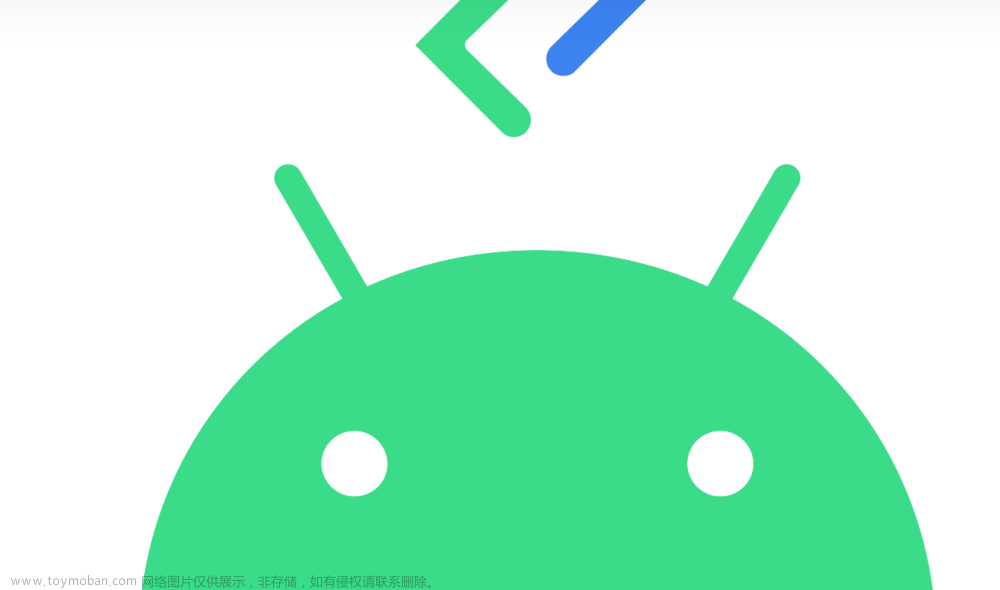hongxi.zhu 2023-7-11
Android T
服务的启动
frameworks/base/services/java/com/android/server/SystemServer.java
private void startOtherServices(@NonNull TimingsTraceAndSlog t) {
t.traceBegin("startOtherServices");
...
WindowManagerService wm = null;
InputManagerService inputManager = null;
try {
//1. 获取InputManagerService,并走初始化inputManager流程
...
t.traceBegin("StartInputManagerService");
inputManager = new InputManagerService(context);
t.traceEnd();
...
//2. WindowManagerService服务持有inputManager对象
t.traceBegin("StartWindowManagerService");
wm = WindowManagerService.main(context, inputManager, !mFirstBoot, mOnlyCore,
new PhoneWindowManager(), mActivityManagerService.mActivityTaskManager);
...
//3. 向ServiceManager注册java层ims服务,name = "input",(native层的服务name = "inputflinger")
ServiceManager.addService(Context.INPUT_SERVICE, inputManager,
/* allowIsolated= */ false, DUMP_FLAG_PRIORITY_CRITICAL);
t.traceEnd();
...
//4. 启动inputflinger,处理输入事件
t.traceBegin("StartInputManager");
inputManager.setWindowManagerCallbacks(wm.getInputManagerCallback());
inputManager.start();
t.traceEnd();
...
} catch (Throwable e) {
...
}
- 获取InputManagerService,并走初始化inputManager(java层和native层)流程
- WindowManagerService服务构造时传入inputManager对象,用户wms和ims交互
- 向ServiceManager注册java层ims服务
- 启动inputflinger,处理输入事件
我们重点看下1和4
1. 初始化InputFlinger
frameworks/base/services/core/java/com/android/server/input/InputManagerService.java
public InputManagerService(Context context) {
this(new Injector(context, DisplayThread.get().getLooper()));
}
@VisibleForTesting
InputManagerService(Injector injector) {
...
mContext = injector.getContext();
mHandler = new InputManagerHandler(injector.getLooper()); //创建一个handle(使用DisplayThread,这个线程用户wms,display,input三个服务使用,对延迟敏感)
mNative = injector.getNativeService(this); //创建native input服务(NativeInputManagerService)
...
injector.registerLocalService(new LocalService()); //将InputManagerService中的InputManagerInternal实现类加入LocalServices,供同进程其他服务调用相关功能
}
@VisibleForTesting
static class Injector {
private final Context mContext;
private final Looper mLooper;
Injector(Context context, Looper looper) {
mContext = context;
mLooper = looper;
}
Context getContext() {
return mContext;
}
Looper getLooper() {
return mLooper;
}
//创建native层对应的service
NativeInputManagerService getNativeService(InputManagerService service) {
return new NativeInputManagerService.NativeImpl(service, mContext, mLooper.getQueue());
}
//将InputManagerService中的InputManagerInternal实现类加入LocalServices,供同进程其他服务调用相关功能
void registerLocalService(InputManagerInternal localService) {
LocalServices.addService(InputManagerInternal.class, localService);
}
}
NativeInputManagerService.NativeImpl
public interface NativeInputManagerService {
...
class NativeImpl implements NativeInputManagerService {
/** Pointer to native input manager service object, used by native code. */
@SuppressWarnings({"unused", "FieldCanBeLocal"})
private final long mPtr;
NativeImpl(InputManagerService service, Context context, MessageQueue messageQueue) {
mPtr = init(service, context, messageQueue); //初始化native层服务并返回该服务的对象指针到java层
}
private native long init(InputManagerService service, Context context,
MessageQueue messageQueue);
...
}
...
}
nativeInit
frameworks/base/services/core/jni/com_android_server_input_InputManagerService.cpp
static const JNINativeMethod gInputManagerMethods[] = {
/* name, signature, funcPtr */
{"init",
"(Lcom/android/server/input/InputManagerService;Landroid/content/Context;Landroid/os/"
"MessageQueue;)J",
(void*)nativeInit}, //init(java)->nativeInit(native)
...
};
static jlong nativeInit(JNIEnv* env, jclass /* clazz */,
jobject serviceObj, jobject contextObj, jobject messageQueueObj) {
sp<MessageQueue> messageQueue = android_os_MessageQueue_getMessageQueue(env, messageQueueObj);
...
// 创建native层NativeInputManager,保存java层的context对象、ims对象、msgqueue
NativeInputManager* im = new NativeInputManager(contextObj, serviceObj,
messageQueue->getLooper());
im->incStrong(0); //NativeInputManager对象强引用 + 1
return reinterpret_cast<jlong>(im); //将native层NativeInputManager对象地址返回给java层,这个地址可以在native层获取出同一个对象
}
//NativeInputManager类声明,实现了三个重要接口抽象类
/*class NativeInputManager : public virtual RefBase,
public virtual InputReaderPolicyInterface,
public virtual InputDispatcherPolicyInterface,
public virtual PointerControllerPolicyInterface {
*/
NativeInputManager::NativeInputManager(jobject contextObj,
jobject serviceObj, const sp<Looper>& looper) :
mLooper(looper), mInteractive(true) {
JNIEnv* env = jniEnv(); //获取虚拟机环境指针
mServiceObj = env->NewGlobalRef(serviceObj); //将java层的ims对象保存为全局引用
{
AutoMutex _l(mLock);
mLocked.systemUiLightsOut = false;
mLocked.pointerSpeed = 0;
mLocked.pointerAcceleration = android::os::IInputConstants::DEFAULT_POINTER_ACCELERATION;
mLocked.pointerGesturesEnabled = true;
mLocked.showTouches = false;
mLocked.pointerDisplayId = ADISPLAY_ID_DEFAULT;
}
mInteractive = true;
InputManager* im = new InputManager(this, this); //创建native层InputManager
mInputManager = im;
defaultServiceManager()->addService(String16("inputflinger"), im); //向ServiceManager注册native层inputflinger服务
}
new InputManager
frameworks/native/services/inputflinger/InputManager.cpp
/**
* The event flow is via the "InputListener" interface, as follows:
* InputReader -> UnwantedInteractionBlocker -> InputClassifier -> InputDispatcher
*/
InputManager::InputManager(
const sp<InputReaderPolicyInterface>& readerPolicy,
const sp<InputDispatcherPolicyInterface>& dispatcherPolicy) {
mDispatcher = createInputDispatcher(dispatcherPolicy);
mClassifier = std::make_unique<InputClassifier>(*mDispatcher);
mBlocker = std::make_unique<UnwantedInteractionBlocker>(*mClassifier);
mReader = createInputReader(readerPolicy, *mBlocker);
}
创建并初始化四个event flow中的重要对象, 事件从前到后传递,前面的对象依次持有下一个阶段的对象引用event flow: InputReader -> UnwantedInteractionBlocker -> InputClassifier -> InputDispatcher
createInputDispatcher
frameworks/native/services/inputflinger/dispatcher/InputDispatcher.cpp
std::unique_ptr<InputDispatcherInterface> createInputDispatcher(
const sp<InputDispatcherPolicyInterface>& policy) {
return std::make_unique<android::inputdispatcher::InputDispatcher>(policy);
}
InputDispatcher::InputDispatcher(const sp<InputDispatcherPolicyInterface>& policy)
: InputDispatcher(policy, STALE_EVENT_TIMEOUT) {}
InputDispatcher::InputDispatcher(const sp<InputDispatcherPolicyInterface>& policy,
std::chrono::nanoseconds staleEventTimeout)
: mPolicy(policy), //将接口实现对象传进来,用户和wms服务交互
...//一些成员变量初始化,太多了不列出
{
mLooper = new Looper(false); //用于InputDispatcher线程
mReporter = createInputReporter();
//注册SurfaceComposer监听,当window状态改变时回调此接口onWindowInfosChanged通知inputflinger
mWindowInfoListener = new DispatcherWindowListener(*this);
SurfaceComposerClient::getDefault()->addWindowInfosListener(mWindowInfoListener);
mKeyRepeatState.lastKeyEntry = nullptr;
policy->getDispatcherConfiguration(&mConfig);
}
InputClassifier
frameworks/native/services/inputflinger/InputClassifier.cpp
//构建InputClassifier,传入mQueuedListener = listener 这个就是mDispatcher对象,这样就可以回调mDispatcher的方法
InputClassifier::InputClassifier(InputListenerInterface& listener) : mQueuedListener(listener) {}
UnwantedInteractionBlocker
//UnwantedInteractionBlocker是所有输入事件都会经历的一个阶段
//inputReader通过它notifyXXX方法向InputDispatcher传递对应事件
//其中对于触摸事件,如果支持手掌误触等功能,则会在这里有特殊处理
UnwantedInteractionBlocker::UnwantedInteractionBlocker(InputListenerInterface& listener)
: UnwantedInteractionBlocker(listener, isPalmRejectionEnabled()){};
//isPalmRejectionEnabled 检测是否开始手掌误触功能
UnwantedInteractionBlocker::UnwantedInteractionBlocker(InputListenerInterface& listener,
bool enablePalmRejection)
: mQueuedListener(listener), mEnablePalmRejection(enablePalmRejection) {}
InputReader
frameworks/native/services/inputflinger/reader/InputReader.cpp
std::unique_ptr<InputReaderInterface> createInputReader(
const sp<InputReaderPolicyInterface>& policy, InputListenerInterface& listener) {
return std::make_unique<InputReader>(std::make_unique<EventHub>(), policy, listener);
}
InputReader::InputReader(std::shared_ptr<EventHubInterface> eventHub,
const sp<InputReaderPolicyInterface>& policy,
InputListenerInterface& listener)
: mContext(this),
mEventHub(eventHub), //1.初始化EventHub
mPolicy(policy),
mQueuedListener(listener), //2. 传入UnwantedInteractionBlocker对象
mGlobalMetaState(AMETA_NONE),
mLedMetaState(AMETA_NONE),
mGeneration(1),
mNextInputDeviceId(END_RESERVED_ID),
mDisableVirtualKeysTimeout(LLONG_MIN),
mNextTimeout(LLONG_MAX),
mConfigurationChangesToRefresh(0) {
refreshConfigurationLocked(0);
updateGlobalMetaStateLocked();
}
InputReader最重要就是:
- 创建并初始化
EventHub, 通过它向驱动获取上报的事件 - 注册
UnwantedInteractionBlockerlistener, 通过它向inputDispater传递事件
EventHub
frameworks/native/services/inputflinger/reader/EventHub.cpp
EventHub::EventHub(void)
: mBuiltInKeyboardId(NO_BUILT_IN_KEYBOARD),
mNextDeviceId(1),
mControllerNumbers(),
mNeedToSendFinishedDeviceScan(false),
mNeedToReopenDevices(false),
mNeedToScanDevices(true),
mPendingEventCount(0),
mPendingEventIndex(0),
mPendingINotify(false) {
ensureProcessCanBlockSuspend();
//初始化epoll (用于监听文件描述符上的事件,用于监听具体/dev/input/eventX的fd的事件)
mEpollFd = epoll_create1(EPOLL_CLOEXEC);
LOG_ALWAYS_FATAL_IF(mEpollFd < 0, "Could not create epoll instance: %s", strerror(errno));
//初始化inotify (用于监听文件和目录的变化,这里主要时用于监听/dev/input/下面的目录变化)
mINotifyFd = inotify_init1(IN_CLOEXEC);
std::error_code errorCode;
bool isDeviceInotifyAdded = false;
//检测 "/dev/input" 文件节点是否存在
if (std::filesystem::exists(DEVICE_INPUT_PATH, errorCode)) {
//如果当前"/dev/input" 文件节点存在则将这个路径加入Inotify监听
addDeviceInputInotify();
} else {
//如果当前"/dev/input" 文件节点不存在,则先将这个路径"/dev"加入Inotify监听(监听dev所有节点)
//因为有些嵌入式设备不一定一直存在输入设备,那么仅当/dev/input出现时(插入输入设备)才添加对/dev/input内容的监听,
addDeviceInotify();
isDeviceInotifyAdded = true;
}
//V4L视频设备相关
if (isV4lScanningEnabled() && !isDeviceInotifyAdded) {
addDeviceInotify();
} else {
ALOGI("Video device scanning disabled");
}
struct epoll_event eventItem = {};
eventItem.events = EPOLLIN | EPOLLWAKEUP; //设置监听epoll事件类型
eventItem.data.fd = mINotifyFd;//要处理的事件相关的文件描述符
//将mINotifyFd加入epoll监听的fd池子
int result = epoll_ctl(mEpollFd, EPOLL_CTL_ADD, mINotifyFd, &eventItem);
//创建一个管道
int wakeFds[2];
result = pipe2(wakeFds, O_CLOEXEC);
mWakeReadPipeFd = wakeFds[0]; //0为读端
mWakeWritePipeFd = wakeFds[1]; //1为写端
result = fcntl(mWakeReadPipeFd, F_SETFL, O_NONBLOCK);
result = fcntl(mWakeWritePipeFd, F_SETFL, O_NONBLOCK);
eventItem.data.fd = mWakeReadPipeFd; //将mWakeReadPipeFd设置到eventItem.data.fd,当epoll有event到来会
//将管道读端fd加入epoll监听的fd池子,当管道写端写入数据时,读端就换监听到epoll事件
result = epoll_ctl(mEpollFd, EPOLL_CTL_ADD, mWakeReadPipeFd, &eventItem);
}
到这里初始化InputFlinger就完成了
2. 启动inputflinger,处理输入事件
前面SystemServer的1、2、3步都完成后,会往下执行
//4. 启动inputflinger,处理输入事件
t.traceBegin("StartInputManager");
//ims也注册wms的回调,用于通知wms一些事件发生
inputManager.setWindowManagerCallbacks(wm.getInputManagerCallback());
inputManager.start(); //启动ims,开始处理输入事件
t.traceEnd();
start()
frameworks/base/services/core/java/com/android/server/input/InputManagerService.java
public void start() {
Slog.i(TAG, "Starting input manager");
mNative.start(); //到native中的方法
// Add ourselves to the Watchdog monitors.
Watchdog.getInstance().addMonitor(this); //加入Watchdog的检测列表中
//一系列对settings中开关的状态值监听
...
}
nativeStart
frameworks/base/services/core/jni/com_android_server_input_InputManagerService.cpp
static void nativeStart(JNIEnv* env, jobject nativeImplObj) {
NativeInputManager* im = getNativeInputManager(env, nativeImplObj);
status_t result = im->getInputManager()->start();
}
InputManager::start()
status_t InputManager::start() {
status_t result = mDispatcher->start();
result = mReader->start();
return OK;
}
分别调用inputDispatcher和inputReader的start方法
InputDispatcher::start()
status_t InputDispatcher::start() {
//创建线程InputDispatcher,线程体函数dispatchOnce(), 线程唤醒函数mLooper->wake()
mThread = std::make_unique<InputThread>(
"InputDispatcher", [this]() { dispatchOnce(); }, [this]() { mLooper->wake(); });
return OK;
}
InputThread继承与Thead类
frameworks/native/services/inputflinger/InputThread.cpp
InputThread::InputThread(std::string name, std::function<void()> loop, std::function<void()> wake)
: mName(name), mThreadWake(wake) {
mThread = new InputThreadImpl(loop);
mThread->run(mName.c_str(), ANDROID_PRIORITY_URGENT_DISPLAY); //启动线程,线程优先级很高
}
class InputThreadImpl : public Thread {
public:
explicit InputThreadImpl(std::function<void()> loop)
: Thread(/* canCallJava */ true), mThreadLoop(loop) {}
~InputThreadImpl() {}
private:
std::function<void()> mThreadLoop;
bool threadLoop() override {
mThreadLoop();
return true;
}
};
创建一个线程,用于分发事件,线程执行体dispatchOnce()文章来源:https://www.toymoban.com/news/detail-548147.html
void InputDispatcher::dispatchOnce() {
nsecs_t nextWakeupTime = LONG_LONG_MAX;
{ // acquire lock
std::scoped_lock _l(mLock);
mDispatcherIsAlive.notify_all();
// Run a dispatch loop if there are no pending commands.
// The dispatch loop might enqueue commands to run afterwards.
if (!haveCommandsLocked()) {
dispatchOnceInnerLocked(&nextWakeupTime); //处理事件的分发
}
// Run all pending commands if there are any.
// If any commands were run then force the next poll to wake up immediately.
if (runCommandsLockedInterruptable()) { //处理命令队列中的命令
nextWakeupTime = LONG_LONG_MIN;
}
// If we are still waiting for ack on some events,
// we might have to wake up earlier to check if an app is anr'ing.
const nsecs_t nextAnrCheck = processAnrsLocked(); //处理input ANR相关
nextWakeupTime = std::min(nextWakeupTime, nextAnrCheck);
// We are about to enter an infinitely long sleep, because we have no commands or
// pending or queued events
if (nextWakeupTime == LONG_LONG_MAX) {
mDispatcherEnteredIdle.notify_all(); //线程进入idle状态
}
} // release lock
// Wait for callback or timeout or wake. (make sure we round up, not down)
nsecs_t currentTime = now();
int timeoutMillis = toMillisecondTimeoutDelay(currentTime, nextWakeupTime);
mLooper->pollOnce(timeoutMillis); //再次进入阻塞等待中
}
InputReader::start()
status_t InputReader::start() {
//创建线程InputReader,线程体函数loopOnce(), 线程唤醒函数mEventHub->wake()(调用EventHub的wake方法来唤醒)
mThread = std::make_unique<InputThread>(
"InputReader", [this]() { loopOnce(); }, [this]() { mEventHub->wake(); });
return OK;
}
void InputReader::loopOnce() {
int32_t oldGeneration;
int32_t timeoutMillis;
bool inputDevicesChanged = false;
std::vector<InputDeviceInfo> inputDevices;
...
//调用EventHub的getEvents获取输入事件
size_t count = mEventHub->getEvents(timeoutMillis, mEventBuffer, EVENT_BUFFER_SIZE);
{ // acquire lock
std::scoped_lock _l(mLock);
mReaderIsAliveCondition.notify_all();
if (count) {
processEventsLocked(mEventBuffer, count);
}
if (mNextTimeout != LLONG_MAX) {
nsecs_t now = systemTime(SYSTEM_TIME_MONOTONIC);
if (now >= mNextTimeout) {
if (DEBUG_RAW_EVENTS) {
ALOGD("Timeout expired, latency=%0.3fms", (now - mNextTimeout) * 0.000001f);
}
mNextTimeout = LLONG_MAX;
timeoutExpiredLocked(now);
}
}
if (oldGeneration != mGeneration) {
inputDevicesChanged = true;
inputDevices = getInputDevicesLocked();
}
} // release lock
// Send out a message that the describes the changed input devices.
//如果输入设备有变化,通知其他服务
if (inputDevicesChanged) {
mPolicy->notifyInputDevicesChanged(inputDevices);
}
mQueuedListener.flush();
}
线程在循环从mEventHub->getEvents获取输入事件(这个方法会引起阻塞),如果获取到事件,EventHub会唤醒此线程,返回后会刷新mQueuedListener的事件队列, 唤醒InputDispatcher线程来消费。
到这里inputflinger的启动就完成,开始正常等待输入事件的上报并处理。文章来源地址https://www.toymoban.com/news/detail-548147.html
到了这里,关于[Android 13]Input系列--InputFlinger的启动的文章就介绍完了。如果您还想了解更多内容,请在右上角搜索TOY模板网以前的文章或继续浏览下面的相关文章,希望大家以后多多支持TOY模板网!











